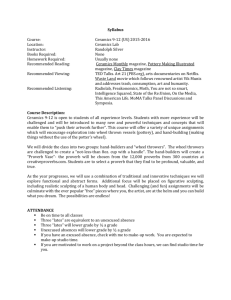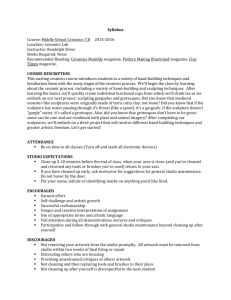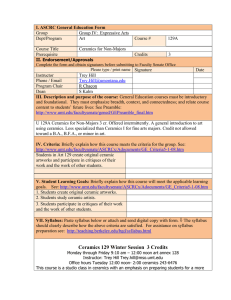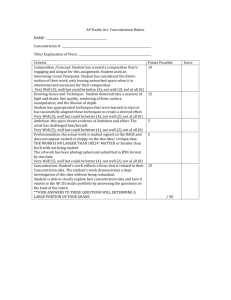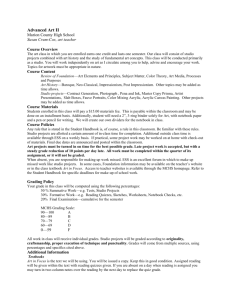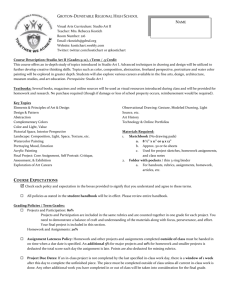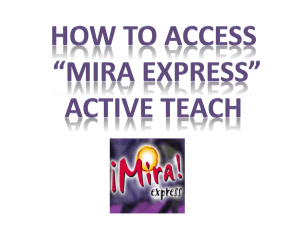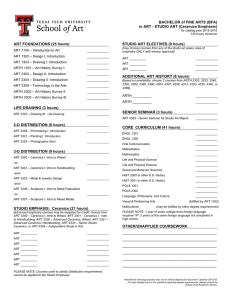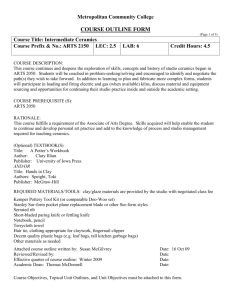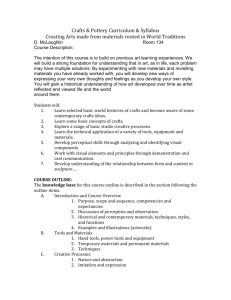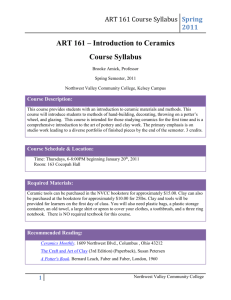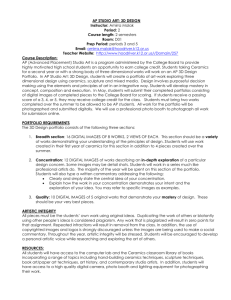Syllabus Ceramics 9 10 For 2015 16 Syllabus
advertisement
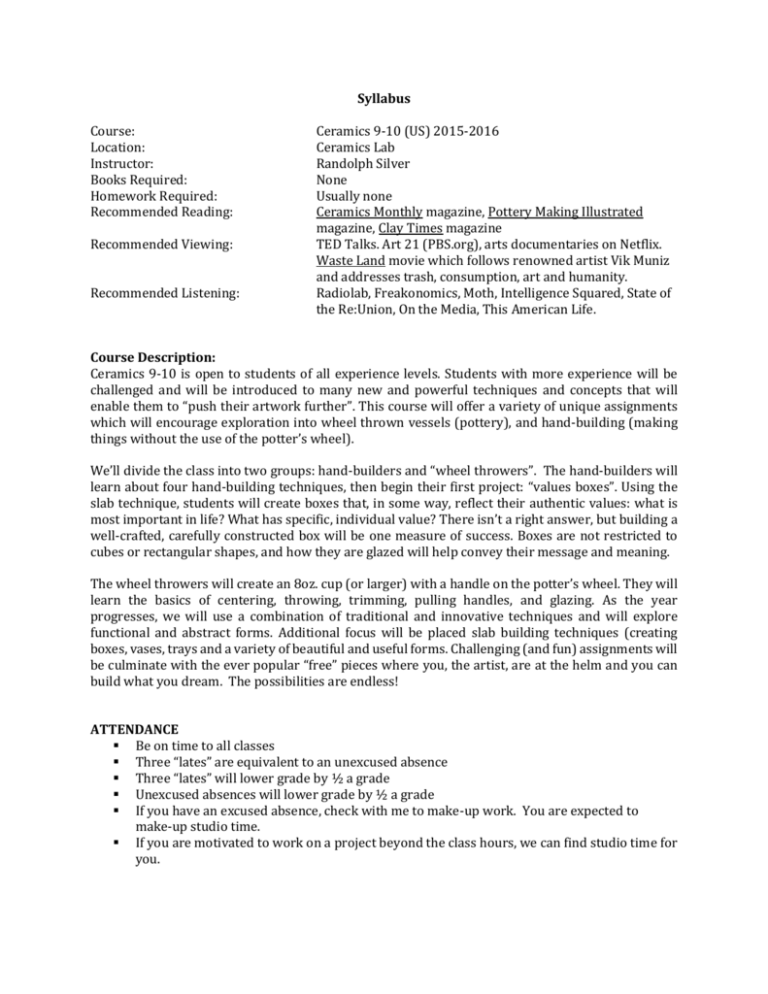
Syllabus Course: Location: Instructor: Books Required: Homework Required: Recommended Reading: Recommended Viewing: Recommended Listening: Ceramics 9-10 (US) 2015-2016 Ceramics Lab Randolph Silver None Usually none Ceramics Monthly magazine, Pottery Making Illustrated magazine, Clay Times magazine TED Talks. Art 21 (PBS.org), arts documentaries on Netflix. Waste Land movie which follows renowned artist Vik Muniz and addresses trash, consumption, art and humanity. Radiolab, Freakonomics, Moth, Intelligence Squared, State of the Re:Union, On the Media, This American Life. Course Description: Ceramics 9-10 is open to students of all experience levels. Students with more experience will be challenged and will be introduced to many new and powerful techniques and concepts that will enable them to “push their artwork further”. This course will offer a variety of unique assignments which will encourage exploration into wheel thrown vessels (pottery), and hand-building (making things without the use of the potter’s wheel). We’ll divide the class into two groups: hand-builders and “wheel throwers”. The hand-builders will learn about four hand-building techniques, then begin their first project: “values boxes”. Using the slab technique, students will create boxes that, in some way, reflect their authentic values: what is most important in life? What has specific, individual value? There isn’t a right answer, but building a well-crafted, carefully constructed box will be one measure of success. Boxes are not restricted to cubes or rectangular shapes, and how they are glazed will help convey their message and meaning. The wheel throwers will create an 8oz. cup (or larger) with a handle on the potter’s wheel. They will learn the basics of centering, throwing, trimming, pulling handles, and glazing. As the year progresses, we will use a combination of traditional and innovative techniques and will explore functional and abstract forms. Additional focus will be placed slab building techniques (creating boxes, vases, trays and a variety of beautiful and useful forms. Challenging (and fun) assignments will be culminate with the ever popular “free” pieces where you, the artist, are at the helm and you can build what you dream. The possibilities are endless! ATTENDANCE Be on time to all classes Three “lates” are equivalent to an unexcused absence Three “lates” will lower grade by ½ a grade Unexcused absences will lower grade by ½ a grade If you have an excused absence, check with me to make-up work. You are expected to make-up studio time. If you are motivated to work on a project beyond the class hours, we can find studio time for you. STUDIO EXPECTATIONS Unplug upon arrival (Turn off and stash all electronic devices, including iPods and phones) You must put your name, initials or “chop” on anything you’d like fired. Clean up 5-10 minutes before the end of class, when your area is clean (and you’ve cleaned and returned any tools or brushes you’ve used) return to your seat. If you have cleaned up early, ask instructor for suggestions for general studio maintenance. Do not hover by the door. GRADING: ENCOURAGED Earnest effort Self-challenge and artistic growth Successful craftsmanship Unique and creative interpretation of assignment Use of appropriate terms and artistic language Full attention during all demonstrations, lectures and critiques Participation in critiques Participation and follow-through with general studio maintenance beyond cleaning up after yourself GRADING: DISCOURAGED Not removing your artwork from the studio promptly. All artwork must be removed from studio within two weeks of final firing or repair Distracting others who are focusing Providing unwelcomed critiques of others artwork Not cleaning and then replacing tools and brushes to their place Not cleaning up after yourself is disrespectful to the next student CONCERNED ABOUT YOUR GRADE/EVALUATION? Arrange a meeting with your teacher (not during class) before or around mid-quint. TEACHER PAGE USAGE: Teacher page can be used to contact teacher and review syllabus. If the teacher page is to be used for other purposes (assigning homework, sharing ceramic images, creating an on-line class portfolio) we will discuss it in class and review how to access the teacher page.
